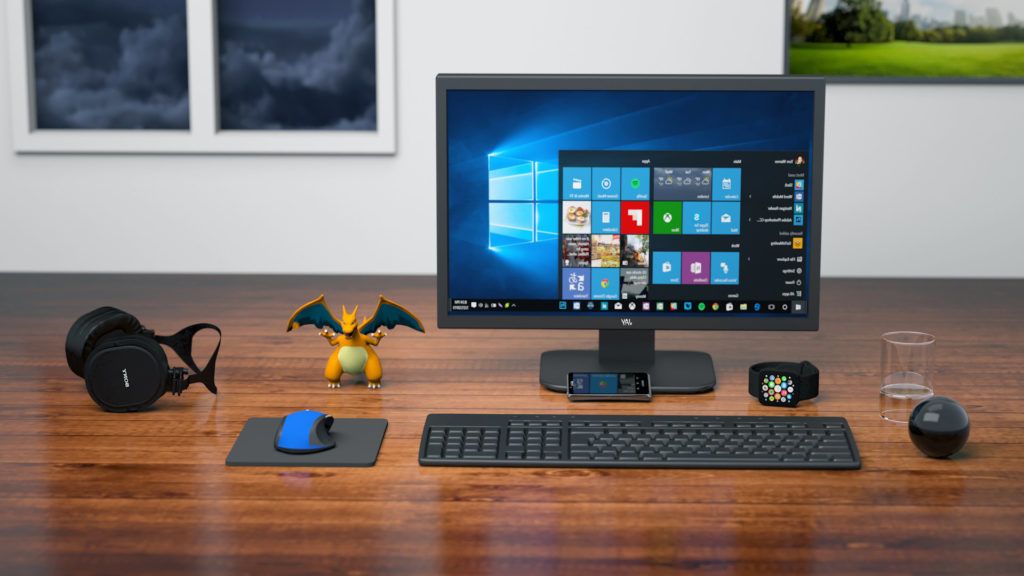We have been using Google products to make our lives easier for many years now, but after a recent professional development session, I wanted to explore what other options were out there. It became very apparent to me that even though Google tools, such as Docs, Drive and Sheets, have been around for a while, there are still people and organizations that do not embrace the Google ecosystem. While these tools might be easy to use for everyday users, there is still a learning curve for those new to the products. Thus, I set out to find a couple of tools that would feel familiar but deliver a lot more than we are used to.
After some hunting around, I was really surprised when my search led me to a tool from Microsoft of all places, and showed me a couple of other Microsoft Office-like tools that would benefit anyone familiar with using PowerPoint or Word.
All the tools below are free to use, and at most require that you have a Microsoft account, which is free, and an installation of Microsoft PowerPoint 2013 (for one of the tools). If your school or district has Office 365, you already have a Microsoft account and can use that account for these tools.
Sway
Sway is a great application for creating online presentations that go beyond the standard slide decks of programs like PowerPoint. The thing that sets Sway apart from PowerPoint is the same thing that makes it somewhat confusing to use at first. While in standard presentation applications, there is a slide, information on that slide and then we go to the next slide, Sway wants you to think about content first, and design later, it even has an option to “remix” your design to one that best suits the content whenever you want. Sway allows you to add content either uploaded from your computer or online sources such as YouTube and Google image searches. One of the benefits of the built-in content search of Sway is that it will look at what you have in your presentation already and suggest content, such as pictures and videos, based on your topics. It also defaults to searching for Creative Commons media (which can be turned off) to ensure that assets in your presentation are licensed for use.
Overall, Sway is a great tool for a new way to create and share presentations. Microsoft offers Sway as an app for both Apple and Android devices, a Windows 10 app, as well as the web version at sway.com. The best way to experience Sway is to sign in and go through some of the examples that they have, as well as creating your own. There are even options of uploading a PowerPoint presentation or PDF file and converting that to a Sway presentation, although my experience with that function has yielded mixed results.
Office Mix
At its core, Office Mix is an add-on for PowerPoint 2013 and newer. It is available for anyone with a Microsoft account, but people who have the Microsoft Office suit from their school or organization might need the help of the IT folks to get it set up. However, once set up, Mix extends PowerPoint to an amazing presentation tool with video and sound capture, as well as on-screen annotations.
Office Mix is geared for educators and creation of interactive educational content. Whether you are a school teacher or an instructional designer, Mix allows you to record video along with your presentation, and embed interactives such as quizzes, polls and educational resources from several open educational resource repositories.
The best way to understand what is possible is by taking a look at the example below and visiting www.mixforteachers.com. There are also many tutorials available for this tool which should make your Office Mix experience more fulfilling.
Office Mix Snip
While Snip is technically part of the Office Mix ecosystem, you do not need the PowerPoint add-on or even Microsoft Office to use this great little tool. Snip is a replacement for the built-in “Snipping Tool” that comes preinstalled with Windows. It extends the functionality of its older screen capturing sibling by placing an always available toolbar on your desktop and giving you options to capture an area of the screen, start a whiteboard or capture a picture from your webcam. Snip will also activate when you press the print screen button on your keyboard.
Once you capture your image you are given the option to add an audio recording to it, and to annotate it with several drawing tools. It’s great for highlighting parts of a user interface, or walking someone through a project. You can then save the snip, copy it to your clipboard or share it with someone.
If you use the Snipping Tool a lot, this is a great and welcome upgrade.
Take a look at some examples on their main website.

